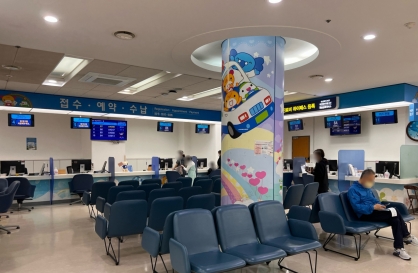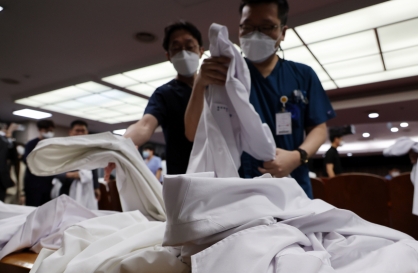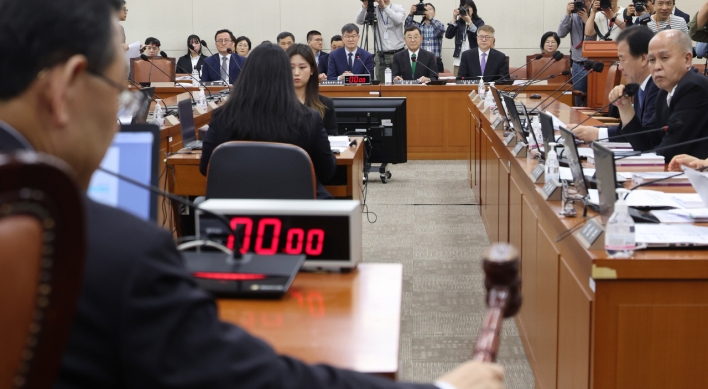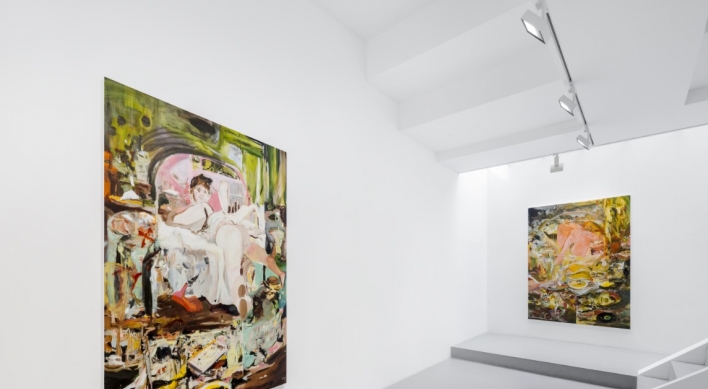National Institute of Ecology and its vast ecological parks to be unveiled early next year
A small coastal town in South Chungcheong Province is brimming with new hope, decades after a plan to turn its vast tidal flats and wetlands into an industrial complex fell through.
Instead of a huge reclamation project that was planned in the late 1980s, Seocheon is erecting a gigantic ecological center called the Ecorium ― which, the project manager said, will be the only one of its kind in the world.
“Compared to the Eden Project in the United Kingdom or Masoala Rainforest at the Zurich Zoo in Switzerland, the Ecorium goes a few steps further,” said Lee Chang-seok, director of the Planning Office of the National Institute of Ecology.
“Its five glasshouses will offer snapshots of ecosystems from five different climate zones,” he told The Korea Herald.
The Eden Project and Masoala Rainforest are some of the world’s largest and most renowned artificial natural reserves.
Comprised of five interlinked glasshouses, the Ecorium will boast cutting-edge technologies that track the sun and automatically adjust indoor environments to create climate conditions of a desert, tropical area, Mediterranean region, warm temperate zone, and polar region.
“Over 4,500 species of plants and animals are being brought into the site from overseas,” Lee said.
A small coastal town in South Chungcheong Province is brimming with new hope, decades after a plan to turn its vast tidal flats and wetlands into an industrial complex fell through.
Instead of a huge reclamation project that was planned in the late 1980s, Seocheon is erecting a gigantic ecological center called the Ecorium ― which, the project manager said, will be the only one of its kind in the world.
“Compared to the Eden Project in the United Kingdom or Masoala Rainforest at the Zurich Zoo in Switzerland, the Ecorium goes a few steps further,” said Lee Chang-seok, director of the Planning Office of the National Institute of Ecology.
“Its five glasshouses will offer snapshots of ecosystems from five different climate zones,” he told The Korea Herald.
The Eden Project and Masoala Rainforest are some of the world’s largest and most renowned artificial natural reserves.
Comprised of five interlinked glasshouses, the Ecorium will boast cutting-edge technologies that track the sun and automatically adjust indoor environments to create climate conditions of a desert, tropical area, Mediterranean region, warm temperate zone, and polar region.
“Over 4,500 species of plants and animals are being brought into the site from overseas,” Lee said.

The Ecorium is just part of a one square kilometer ecological park planned in Seocheon, which also includes the construction of headquarters for the new National Institute of Ecology.
The 340 billion won project also involves building a complex for state-of-the-art ecological research centers and education and exhibition facilities, as well as guest accommodation. Scores of wildlife habitats are also planned throughout the spacious site.
“Construction is over 90 percent finished and we’re on schedule for a grand opening early next year,” he said.
A professor of ecology at Seoul Women’s University, Lee expressed hope that the NIE and its mammoth artificial natural reserve will give a major boost to ecological studies in Korea as it strives to become a model nation for the green economy.
“The NIE will become a think tank for Korea’s strategies for low-carbon green growth and a world-class research center in ecological studies,” he said.
It will also help enhance public awareness on the environmental problems facing Korea and the world.
All of the facilities are designed to have the smallest possible carbon footprints, deploying a maximum of renewable energy.
Carbon dioxide emissions are expected to be about 870 metric tons a year, 86 percent of which will be absorbed by the existing and future forests in the compound.
“Although not totally ‘carbon free,’ it represents an epochal achievement considering that only 12 percent of CO2 emitted is absorbed in Korea,” Lee said.
The initial plan for Seocheon was hugely different from what it is now.
The government in 1989 shook the breezy harbor town with a plan to develop the coastal area, including tidal flats, into Janghang Industrial Zone.
The plan, however, faltered amid environmental concerns until it was replaced in 2007 by a new project to turn Seocheon into a center for ecological studies and green industries.
By Lee Sun-young (milaya@heraldcorp.com)
-
Articles by Korea Herald





![[Herald Interview] Mom’s Touch seeks to replicate success in Japan](http://res.heraldm.com/phpwas/restmb_idxmake.php?idx=644&simg=/content/image/2024/04/29/20240429050568_0.jpg&u=)



![[News Focus] Lee tells Yoon that he has governed without political dialogue](http://res.heraldm.com/phpwas/restmb_idxmake.php?idx=644&simg=/content/image/2024/04/29/20240429050696_0.jpg&u=20240429210658)









![[Today’s K-pop] Seventeen sets sales record with best-of album](http://res.heraldm.com/phpwas/restmb_idxmake.php?idx=642&simg=/content/image/2024/04/30/20240430050818_0.jpg&u=)